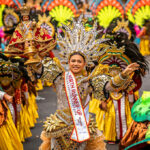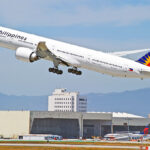Hello friends! If you enjoy colourful cultures and everlasting moments, Iloilo City opens its arms to us. Let’s discover this beauty together. “Life’s short and the world is wide. Let the music play!” Picture this: you are side by side with thousands of cheerful locals, the Philippine sun is shining down, and the air is alive with a beat so real you feel it in your bones. Then, out of nowhere, you start to hear a loud roar as the first performers appear, covered in paint from head to toe, wearing amazing clothes, and performing with the skill of ancient warriors. “Culture is the widening of the mind and of the spirit.” To my friends, this isn’t simply a festival; this is a genuine, life-changing experience. This is the Dinagyang Festival in Iloilo City.
I have been around the world, chasing sunsets and festivals, but nothing could really prepare me for this level of lively energy and genuine spirituality at the biggest event in Iloilo’s yearly calendar. It is a display of faith and history, artistry at its best. If you want to experience true culture, not just tourist attractions, then you must be in Iloilo on the fourth weekend of January, because you are about to experience the heart of the Visayas. “To travel is to discover that everyone is wrong about other countries.” This is my own report from the streets of Iloilo, a guide from one traveller to another to uphold the original beauty and spirit of the Dinagyang Festival.
The Heartbeat of Iloilo: The Real Meaning of Dinagyang
When someone says ‘Dinagyang’, you need to know its Hiligaynon root: ‘dinagyang’ means “merrymaking” or “playing”. But to describe this large, elaborate festival inside that one word is almost too elementary. It is organised chaos, a sacred party which contains a thousand-year-old story around each beat of the drum.
No other festival I have seen has the dual existence of Dinagyang, where the sanctified and the historical coexist in a theatrical manner. On the one hand, Dinagyang is a strong expression of Catholic devotion centred on the Santo Niño (the Child Jesus), a representation of safety, blessings, and grace for the Ilonggo people. This makes it a crucial religious festival in Philippines. On the other hand, Dinagyang tells the story of foundational history, the Barter of Panay, a peaceful agreement between the indigenous Atis and the 10 Bornean Datus who came to Panay generations ago.
This amalgamation is the magic of the Dinagyang festival. It is a colourful recognition that the identity of Iloilo is made on the basis of faith, tranquillity, and the coexistence of cultures. It is a sight that is extremely emotional to a traveller to witness a community honour their historical backgrounds and at the same time their spiritual worship with such naked passion.
An Etched History, a History in Rhythm and Paint.
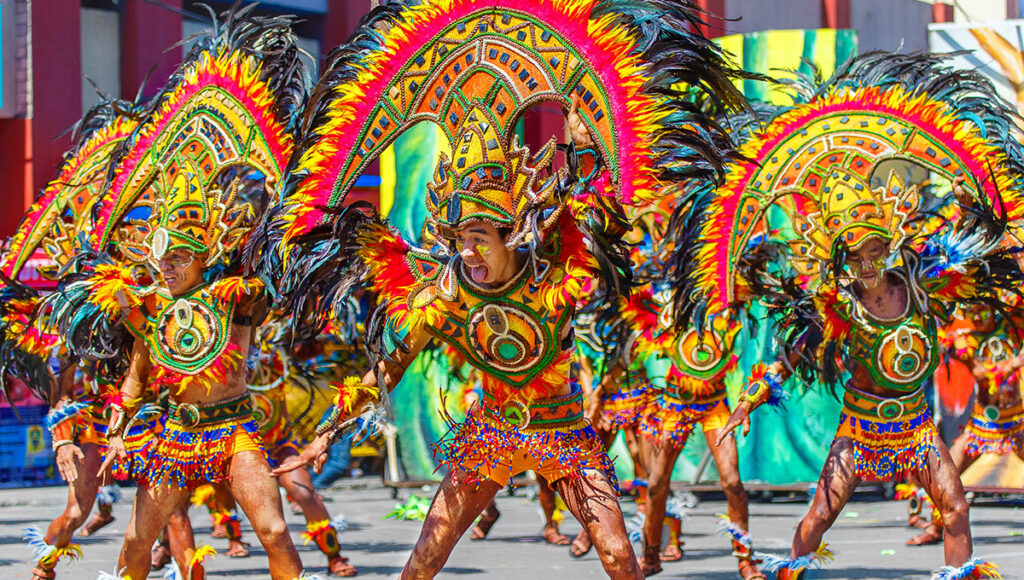
We have to go into the origin of the dancers so that we can appreciate them; they are the living books of the history of the Iloilo Festival. The festival was inaugurated in the late 60s and it arose as a result of the religious procession with the arrival of a copy of the Santo Niño in Cebu at the San Jose Parish. But in its cultural centre, it is tapping something much older, the tale of the Ati.
The Ati Tribute: The birth of the look.
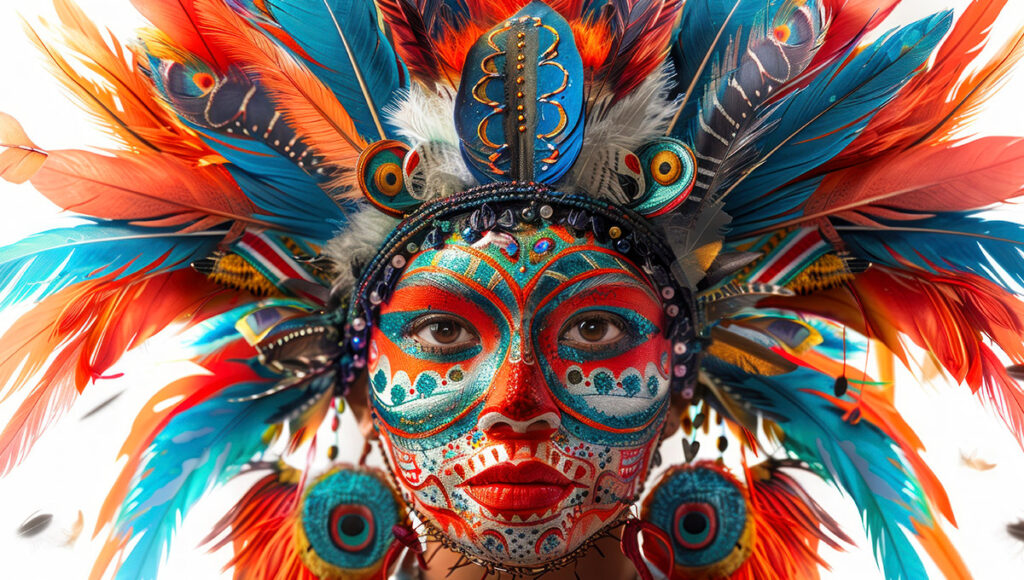
The contemporary Dinagyang Festival events are based on the Ati-Atihan mode of dressing, in which the competitors are coated with dark body paint. It is an eloquent and gorgeous testament to the ancient inhabitants of the Panay Island, the Ati (also known as Aeta) people, who are commonly said to be dark-skinned. Upon the arrival of the Malay Datus, they are reported to have welcomed the Ati, and the transaction resulted in a barter when the Datus bought the land at a golden salakot (hat) and a long necklace.
Modern Dinagyang costumes, however, are not costumes; they are homages. They embrace the essence of the Ati warriors who were powerful, tough and well attached to their land. When you are watching a performer who has been covered in paint and has been using natural materials, as a spectator, you are not only watching a dancer, you are watching a manifestation of the primordial identity of Iloilo. It is history that is being applauded, not merely remembered.
General Tourism Information: The Dinagyang Festival is held annually on the fourth weekend of January in Iloilo City, Philippines. The main competition is usually on the Sunday, preceded by the Kasadyahan Festival on Saturday and a religious fluvial procession on Friday. Booking accommodations and transportation well in advance is highly recommended due to the massive influx of local and international visitors.
The Grand Spectacle -The Tribu Competition.
The most popular and accepted one is the Tribu Competition (Tribe Competition). It is at this point that Dinagyang stands out of all other festivals in the Philippines.
The Art of the Dinagyang Warrior.
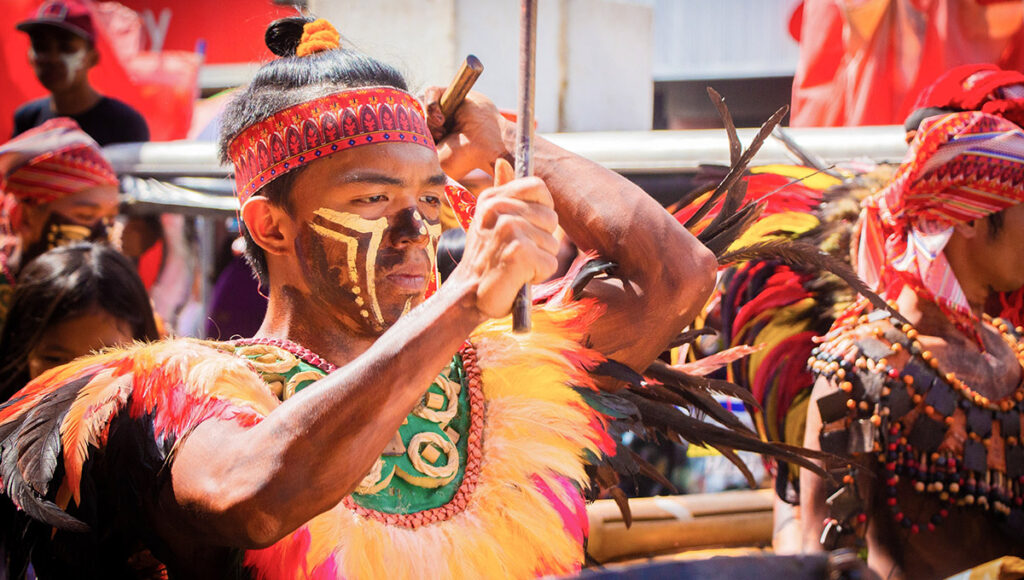
The aesthetic is breathtaking, and it is worth discussing.
The Costumes and the Masks: The plain parade dresses. Dinagyang Festival costumes are the works of tribal fusion. The appearance is most impressive, which is that of a warrior. Actors and actresses have tall, fancy headdresses made of feathers, beads, and frequently with stylised animal figures. They have their bodies thoroughly painted and marked with tribal styles to create a ferocious appearance of the native. The bright reflective clothing, geometric designs, and symbolic objects (spears, shields) are visible and glittering even at a distance.
Although the face paint and markings tend to substitute the classic Dinagyang Festival mask, the whole effect, the ferocious faces, the exaggerated lines, the metamorphic make-up, works as the mask of the warrior. It gives the performer an opportunity to assume the spirit of the ancient Ati, which brings power, agility, and devotion. Each of these stitches, each of these beads, each of these painted lines, is a certain story of the narrative selected by the tribe.
Unified Movement, Unforgettable Stories
The only difference between Dinagyang as a mere street dance and a street dance with a high degree of specialisation is its undeterred emphasis on coordinated dancing and dramatic narrative. The rival tribus take months to master their routines. The judging standards are so high, with emphasis being laid on:
1. Choreographic Accuracy: The movements have to be in unison and in the overcrowded areas of the streets (known as stations).
2. Rhythmic Intensity: The music corps is an independent figure in the performance. Their loud and intricate rhythms determine the speed and intensity of the dancers and generate a drunken, continuous motion.
3. Visual Impact and Staging: The tribes give a complete story, each with most of them portraying the arrival of the Sto. The life of Ilonggo today, or Niño, the Barter of Panay. They employ huge, travelling supports and theatrical street performances and make the street into a theatre.
It is worth the early start as a traveller to seek a place somewhere close to one of the main judging stations, such as the Iloilo Freedom Grandstand. It is contagious when a hundred dancers do a complicated, sweeping motion in flawless harmony with the primitivist beat of the drums as the only guiding force. It is a colour, sweat and total dedication that you will never forget. You seem not only to be witnessing history, but are also taking part in its retelling. The Dinagyang Festival costumes truly are an immersive experience.
The Mishmash of God and Party.
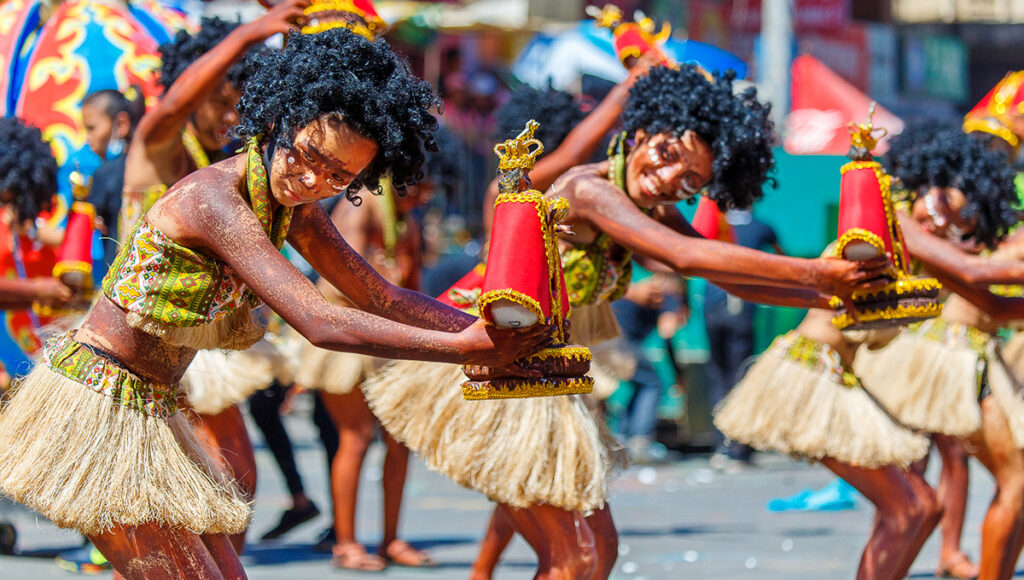
Dinagyang is not merely about the spectacle of the street Dinagyang dance; it is a spiritual journey. The pure events of religious interest are intentionally framed by the cultural programme to remind us all that the entire merry-making is the result of the deep-rooted faith.
A Sacred Trip Down the River.
The mood before the actual competition on Friday changes to reverence. It involves the serious Fluvial Procession along the Iloilo River by the devotees. The Niino image is carefully packed on a boat and then a flotilla of decorated boats, attended by prayers and hymns. These festival rituals are a cornerstone of the whole celebration.
This contrast was also so beautiful to me compared to the intensity of the street dancing. A quiet reflections were gained by standing on the river and by watching the procession as it glided on its way, and bathed in the soft light of the early morning. It is a beautiful foundation of the whole festival, as it attests that the dancing that is so high-energy is a form of thanksgiving and worship, an offering to the Child Jesus.
The Kasadyahan Festival: A Cultural Canvas.
On the Saturday, Kasadyahan Festival takes centre stage before the Tribu competition on the Sunday. This exhibit is the ideal introductory piece, extending the cultural discourse to cover the whole of Western Visayas, not just to the city of Iloilo.
Kasadyahan translates to the gaiety or merry. In this case, there are various groups from different provinces practising their local dances and traditions. You’ll see different styles of headpieces and body paint, giving you a wider appreciation for the artistry behind the Dinagyang Festival mask. It is a beautiful show of Filipino heritage diversity and gives a traveller a kaleidoscopic vision of the local culture, but all in the same artistic and flair discipline which characterises Dinagyang. It is like a reminder that Iloilo is a hub, a critical centre towards the preservation and cultural celebration of regional history.
For more on cultural immersion in the Philippines, check out the Philippines’ culture and traditions for full festival experiences.
Advice to a Fellow Traveller – How to enjoy Dinagyang.
As you are likely looking to become a fully immersed participant as well, here is my list of proven tips to join this grandiose, high-energy event:
1. Book Your Ground Early: Dinagyang takes place on the fourth weekend of the month of January and Iloilo City breaks at the seams. The hotel should be reserved long before the event (at least months before the city centre (Jaro, Mandurriao, or La Paz). The earlier, the better.
2. Plan Your Observation: I advise you to purchase a ticket to one of the official locations of judgment, even though you can witness the tribus dancing in the streets. These tickets are more costly, but they guarantee unobstructed viewing of the full theatrical production, something the dancers have mastered. The artistry of the Dinagyang Festival costumes is best appreciated up close. The main Freedom Grandstand has an exciting atmosphere.
3. Take the Heat and Hydration: It is a tropical street festival. Wear light clothes, comfortable shoes (you will be standing and walking for hours) and have a lot of water. It is hot, but the strength of the mob is a mighty panacea!
4. Get the Feel: The big dance numbers are the focus of the attraction, but you need to check out the side streets as well as the parade routes. Here is where you are likely to be close to the performers most of the time as they dress up, and they give you wonderful chances to see the finer details of the costumes and the paintwork. Find the non-official sadsad (street dancing) groups – informal groups of local celebrations who do not have the packaged ecstasy of the Dinagyang Festival. Their simpler celebration still embodies the spirit of the Dinagyang Festival mask design.
5. Taste Iloilo: You can never complete your Dinagyang experience without trying the Hiligaynon food. Find a hot bowl of La Paz Batchoy (noodle soup made of pork cracklings and offal) or a hot cup of Pancit Molo (local dumpling soup). The food is the component of the cultural tapestry as much as the dance. Read our Filipino dishes and Filipino street food guides to know more.
Leaving Ilonggo Spirit.
When the final drum decays and the colourful masks are carefully packed back the next year, you have an unerased memory. Dinagyang is an emotional experience that touches and embraces the core of the Filipino spirit a beautiful amalgamation of strength, deep faith and an infectious ability to be happy.
Iloilo brought me to the city as a traveller to see a spectacle. I walked away having a better sense of community, history and the artistry of human celebration itself. The Dinagyang Festival food and the sheer spectacle of the dance make this an unforgettable event. The Dinagyang Festival is a masterpiece of organisation, devotion and cultural pride that merits a place among the truly great festivals in the whole world. Travellers booking with World Pinoy Flights can experience this festival with expert guidance and insider tips to make their visit seamless and immersive.
Then when coming to Iloilo, expect to be carried away. Also, allow the thunderous beat to lead the feet, allow the bright colours to blind the eyes, and allow the Ilonggo spirit of merrymaking to get into your soul. The unique blend of history, faith, and local Dinagyang Festival food is what sets it apart, making it a highlight of Iloilo holidays. And this is the very core of the Dinagyang Festival. You will never be the same.
FAQs about Dinagyang Festival
When and where is the Dinagyang Festival held?
The main events of the Dinagyang Festival are held yearly on the fourth weekend of January in Iloilo City, Philippines.
What is the main historical and religious significance of the festival?
The festival serves as a dual-purpose vehicle for a strong expression of the Catholic faith of the local community in honour of the Santo Niño (Child Jesus) and a historical commemoration of the Barter of Panay between the indigenous Atis and Bornean Datus.
What are the key competitions or main events a traveller should look out for?
The two primary events are the Tribu Competition (Tribe Competition) on Sunday, which is a face-off of street dances performed with many colourful costumes and the Kasadyahan Festival on Saturday that features folk dances from the entire Western Visayas region.
What makes the Dinagyang Festival costumes unique?
Dinagyang costumes and body paint celebrate the unrecorded time when the Ati lived in Panay Island, and thus they feature people whose bodies are painted black with feathers on their heads, using beads, and generally having a fierce, warrior-like look.
How should a visitor plan for the festival?
Visitors ought to secure their lodgings and means of transport several weeks (or even months) ahead of time, dress properly in light clothes and wear comfortable shoes, do not forget to drink water, and if they have the money to spare, purchasing a ticket will secure a spot at the judging stations with great views, such as the Freedom Grandstand.


